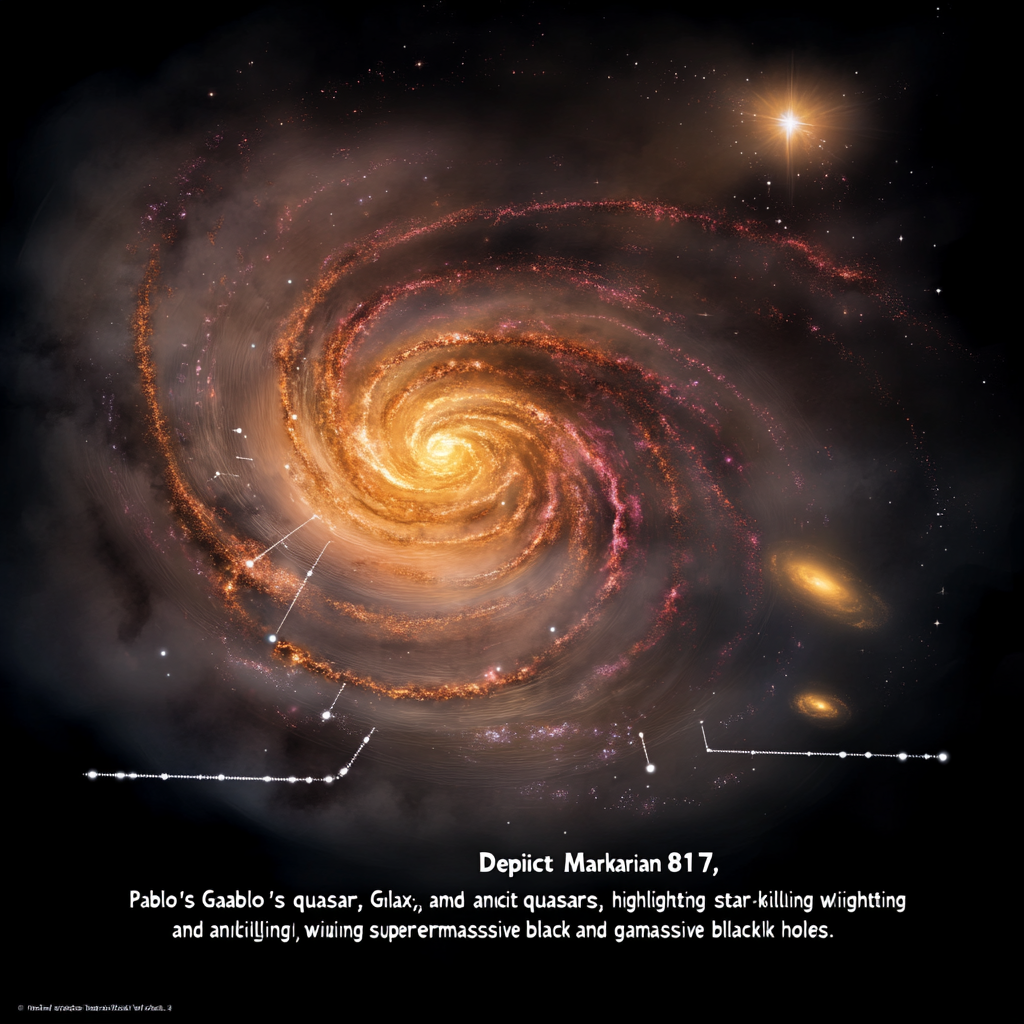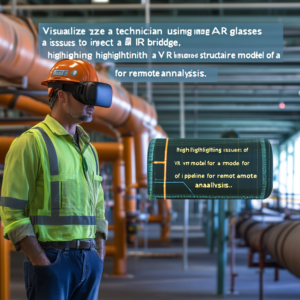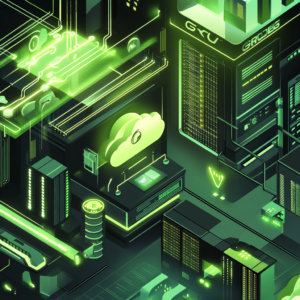
Colossal Cosmic Entity Unleashes Destructive Stellar Gust, Reveals Space Observatory
Supermassive Black Holes: The Galaxy-Killing Winds Unraveled
In the grand theater of the cosmos, supermassive black holes are the enigmatic performers at the center of galaxies, wielding the kind of cosmic power that not even a sci-fi flick could imagine. Recent revelations, thanks to the James Webb Space Telescope (JWST), peel back the layers of these galactic titans, exposing a shocking truth: these black holes can obliterate their homes through fierce winds that snuff out the very essence of star formation. Yes, you heard it right—welcome to the cosmic drama where black holes starve galaxies into obscurity!
Unearthing the Secrets of Markarian 817
Picture this: the spiral galaxy Markarian 817, lounging 430 million light-years away, caught the attention of astronomers when an unsettling dip in X-ray light was detected. Noticing that something was amiss, researchers kicked off an investigation using data from NASA's Swift Observatory and the European Space Agency's XMM-Newton mission. What they unveiled was jaw-dropping: a relentless gale of cosmic wind swirling around the black hole at a hefty percentage of the speed of light!
And here's the kicker—this wasn’t just a little puff of gas like you’d see on a windy day; no, this was a sustained tempest that lasted for several hundred days. The winds swept away dust and debris, painting a vivid picture of how black holes can yet again manage to manipulate and reshape their stellar surroundings, effectively stifling any chance of star formation in the immediate vicinity. If there’s anything to learn here, it’s that cosmic black holes are not just gravity wells; they’re celestial demigods reshaping their realms!
Pablo’s Galaxy: A Chilling Overview of Galactic Obliteration
Now let’s stroll over to another cosmic spectacle—Pablo's Galaxy, officially dubbed GS-10578. This mammoth galaxy is a powerhouse with an astonishing mass roughly 200 billion times that of our Sun! But hold on, it’s not just the size that’s jaw-dropping; it’s the quirk of fate that has it located a staggering 11.5 billion light-years from Earth. We’re seeing it as it looked just 2.3 billion years after the Big Bang, which gives us a front-row seat to cosmic history!
Researchers found that the supermassive black hole at the core of Pablo's Galaxy was expelling gas at unthinkable speeds—around 2,235,600 miles per hour! Imagine a cosmic wind so fierce that it can break free from the galaxy's grasp, draining the gas that would normally give birth to stars. The JWST, with its unprecedented sensitivity, revealed previously cloaked, colder gas that confirmed this black hole is the reigning tyrant of its stellar domain, effectively turning it into a quiet, starless expanse. Now, if that isn’t a plot twist worthy of a cosmic novel, I don’t know what is!
The Ancient Echoes of Quasar Winds
We can’t overlook the mind-blowing revelations from the quasar J1007+2115, which has given us a glimpse into the ancient universe just 700 million years after the Big Bang. This wasn't just a wind—it was a gale extending 7,500 light-years from the black hole, pushing gas and dust out at a jaw-dropping velocity of 6,000 times the speed of light! That’s not just fast; that’s cosmic! Such winds rip away the very materials that form new stars, leading to a galaxy starved of fresh cosmic birth.
Understanding the Impact on Galactic Evolution
Now that we’ve traversed through some of the most astounding cosmic theaters, let’s take a step back and grasp the larger implications of these black hole winds on the galaxy evolution narrative. It’s evident—supermassive black holes are the cosmic heavyweights in the arena of galaxy formation and transformation. By belching out gas and dust, they serve as executioners of star formation, leading certain galaxies to become "dead" or "quiescent."
But here’s the twist—while these cosmic winds halt the birth of new stars, they don’t always induce chaos in the galactic structure. Often, the stars in these fractured galaxies move in surprisingly orderly patterns. It’s as if, amidst the turmoil of star formation stalling, they’re still waltzing gracefully at a cosmic ball, restrained yet harmonic.
For those of us fascinated by the early universe, the implications of observing ancient quasars like J1007+2115 are monumental. They offer a trail of breadcrumbs leading us straight to understanding how galaxies evolved during those frenetic early epochs, revealing just how swiftly some galaxies could thrive—or die—thanks to the black holes at their cores.
Putting it all Together: Cosmic Drama and Future Discoveries
The epic narratives unfurling from the James Webb Space Telescope push our understanding of the universe into exhilarating territory. History lessons are being written in the dust and gas ejected from supermassive black holes, reminding us that these gargantuan forces are active cosmic sculptors, shaping the destinies of the galaxies they inhabit. They are not mere spectators in this cosmic ballet; they are the dancers leading the choreography of the universe!
So, as we gear up for more astronomical revelations, let’s keep our eyes peeled. The dance between supermassive black holes and their galactic cohorts will undoubtedly uncover more secrets and twist our understanding of cosmic history in delightful ways.
Want to stay up to date with the latest news on astronomical discoveries and the role of supermassive black holes? Subscribe to our Telegram channel: @channel_neirotoken.

